The strip of land I’m driving through, on the far Western edge of Minnesota and just 15 miles from the South Dakota border, feels like Earth at its flattest. The dearth of elevation heightens its bucolic charm: the three-hour drive from Minneapolis has been marked by verdant fields, castle-like grain silos, and the occasional cow. It’s the real-life version of the agrarian paradise I’ve only seen teased on milk labels.
It’s easy to imagine its bounty going straight to county fairs and local, hipster-free farmers’ markets. But a significant amount of the crop I’m about to explore may end up in a Vodka Martini or a French 75.
Prairie Organic Spirits
Our destination is Sather Organic Farms, located just outside of Madison, Minnesota (“the lutefisk capital of the USA,” Wikipedia tells me). It’s one of the main suppliers of corn to Prairie Organic Spirits, a brand belonging to the Minneapolis-based Phillips Distilling Company. Phillips has been in the business for more than a century, and has done much to shape the domestic vodka industry.
Milestones include launching the first flavored vodka (1947) and the first “enjoy in moderation” campaign (1977). Phillips also helped develop the premium vodka category by bringing Belvedere and Chopin vodkas to the United States in the 1990s.

By launching Prairie in 2008, Phillips expanded into another new category: organic liquor. Today Prairie’s line up includes a gin, a vodka, and a cucumber-flavored. Each is made from organic yellow corn grown at family farms, and because of variants in the growing process, distilled to taste.
The day before this trip I had the opportunity to visit the Minneapolis HQ of Phillips Distilling and try the spirit in several cocktails. As a result I learned that organic gin makes a perfectly good (and possibly-but-probably-not-actually-better-for-you) Last Word. I was particularly intrigued by the cucumber vodka, which avoids the one-note, bracing flavor shock that characterizes most flavored vodkas. By contrast it had an earthier, funkier, vegetal coolness that instantly transported me to a Lewis Carroll-themed English garden party. Then after the distillery visit, it was off to the farm to see how this whole process begins.
Sather Organic Farms
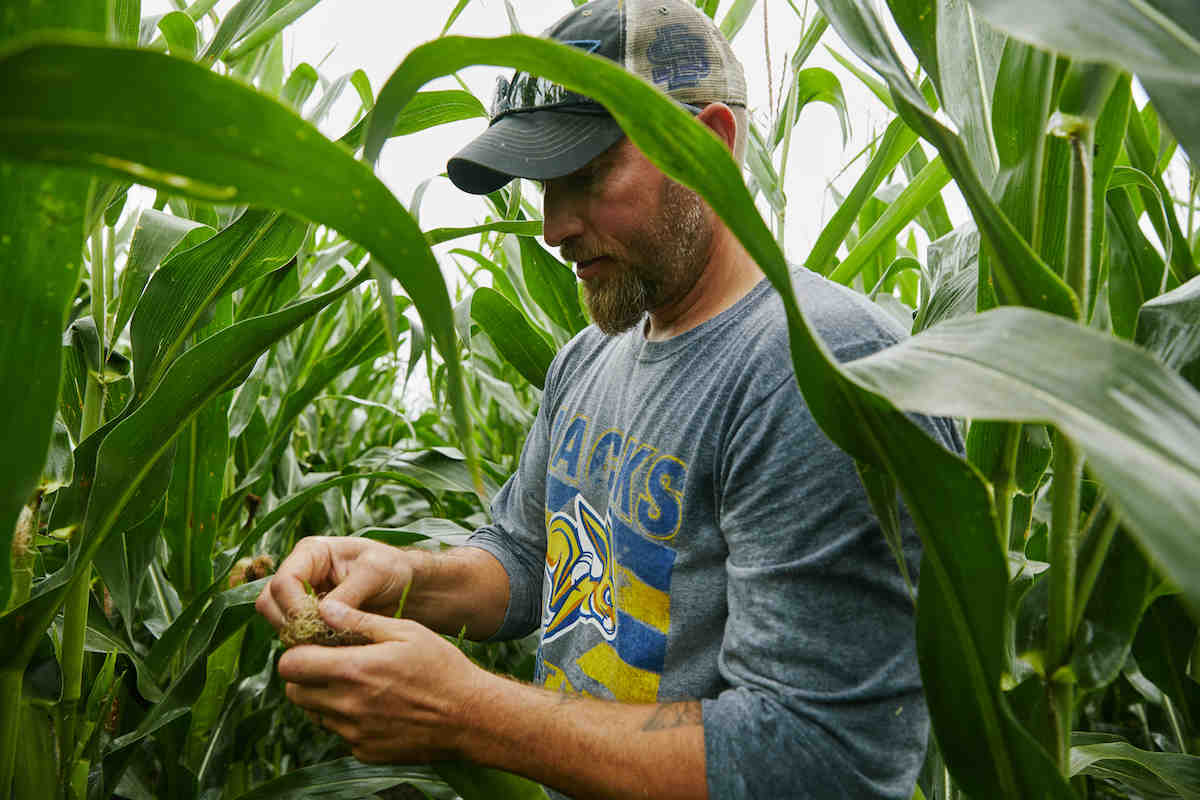
I’m greeted at the farm by its owner and namesake, John Sather. Sather is tall and broad-shouldered, and has a short reddish beard that increases his resemblance to a hypothetical Viking ancestor. He wears worn jeans and a T-shirt celebrating the South Dakota State Jackrabbits, rolled up to his elbows.
Sather, who prefers Prairie Cucumber Vodka with Sun Drop soda, is farming land that’s been in his family for five generations. It was originally purchased by his great-great-grandfather at a school auction for four dollars an acre. That great-great grandfather returned to Norway and sold the land at two thousand dollars per acre to his great-grandfather, who became the first to farm it. It was eventually passed down to a great uncle, who called Sather while he was studying agronomy at South Dakota State.
“He called me to see if I wanted to farm,” Sather says. “It was always my dream, but my dad went through the ‘80s which had really poor prices, and he ended up quitting farming. His boys didn’t want to farm, so he asked me if I wanted to take over. I bought his machinery over the course of a few years, got married, and this is where we are now.”
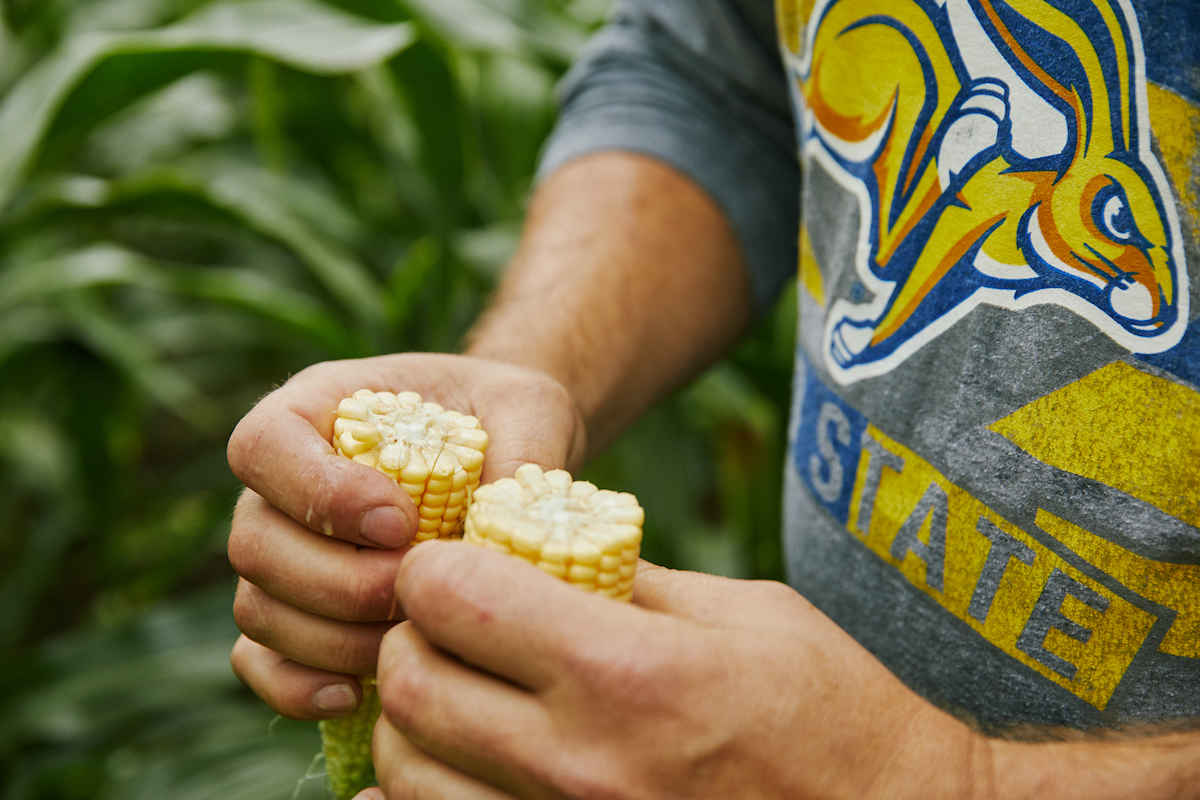
That “we” refers to Sather’s wife, Angie, their five children and two dogs. Together they live in a home across from the tractor garage, ensuring that the farm remains a family affair. As Sather employs only two other farm hands full-time, his family sometimes pitches in. A 14-year-old son helps work the combine harvester, and the sole daughter can handle the ripper tractor.
Sather didn’t always intend to farm organically: it almost came to him by chance. One of his fraternity brothers was an organic farmer who preached non-chemical weed control over card games. Sather, who had worked summer jobs spraying weeds and didn’t like what he saw, soaked up the knowledge like a sponge and decided his own farm would be organic.
It takes three years to convert conventional land to organic, but the ground Sather would be working on hadn’t been sprayed in 20 years. Still, Sather needed something that could control weeds without turning to chemicals.
The Flame Weeder
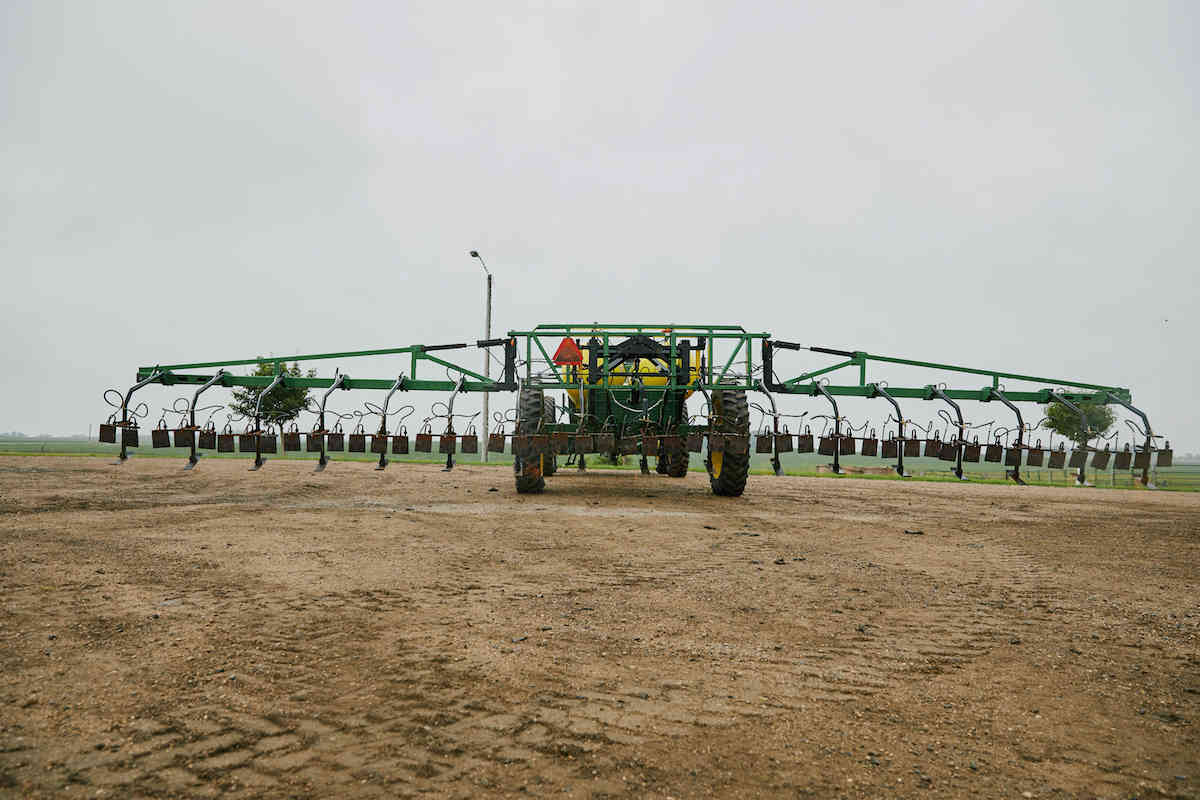
“This is the flame weeder, which is something you won’t see on conventional farms or probably anywhere,” Sather says as way of introducing the enormous machine sitting on a dirt track to our left.
The flame weeder looks one-part tractor and one-part arcane flying machine. Up front is the green-painted cab, sporting four enormous wheels. Attached behind are a pair of tanks and a skeletal steel frame resembling a stripped-down biplane wing. The attached structure is really a sprayer that’s been converted by Sather to exude flames rather than water.
“The technology is old technology,” says Sather. “They would use torches or flames to kill the weeds.”
Sather has a farm hand fire up the flame weeder. The nozzles attached to the ex-sprayer begin shooting out flames, and the resultant heat cuts through the chill of the rain-soaked day. My first thought is “that’s cool.” My second thought is “how can they possibly carpet-flame the weeds without turning the crop to ash?”
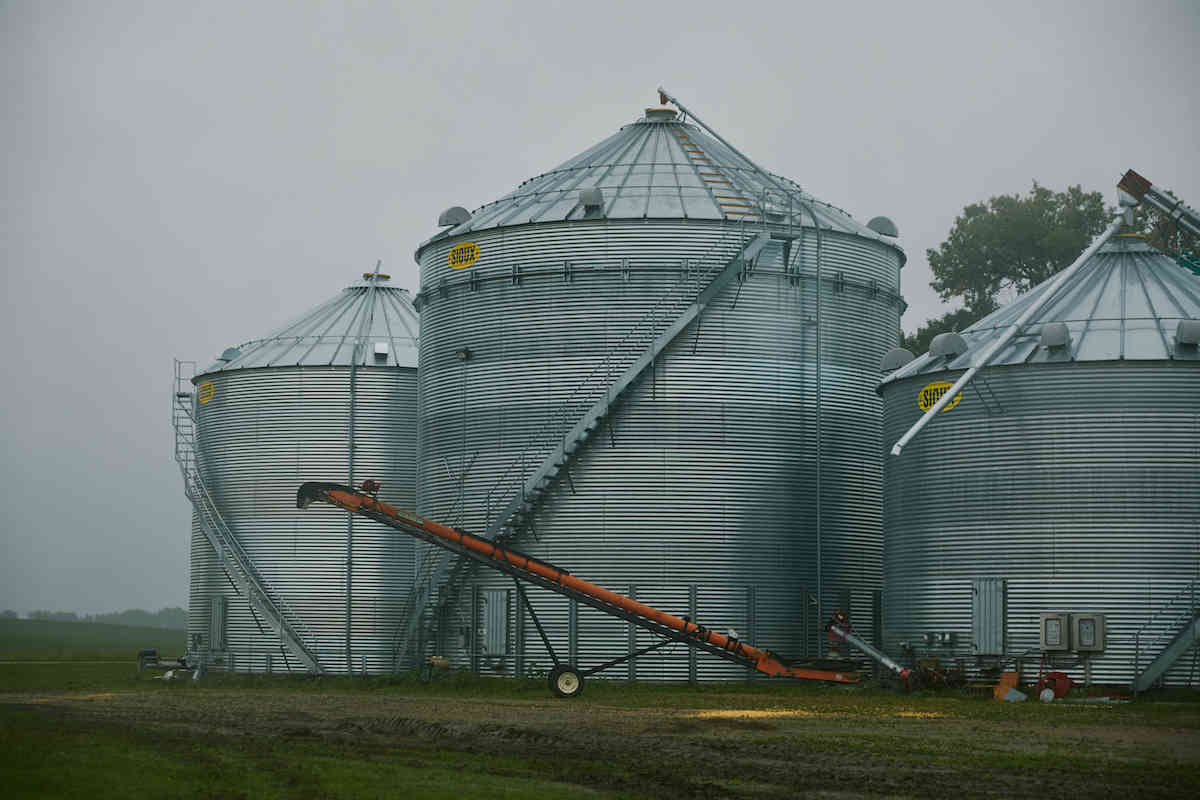
Sather explains the trick. Their corn is roughly 10-inches tall. The flame weeder will broadcast its fire across the entire field, killing the weeds and the top part of the corn with it. However, the corn’s growing point is below ground, which allows the crop to regenerate new leaves.
“When you’re done you will have a relatively clean field, and the corn will come right back out of it,” says Sather.
After that first burning, the field is cultivated with a row crop cultivator to get any weeds the flames may have missed. Once the corn has grown to be about two-and-a-half feet tall, Sather will do a second flaming that turns the torches underneath, burning only the bottom of the plants to destroy any remaining weeds.
This alternate approach to weed clearance spares the crops from harmful chemicals, and according to Sather, has no negative impact on his harvest.
“You hear that organics can’t feed the world and people shouldn’t do it because people are going to starve in certain places, and quite frankly we get tremendous yields with our crops.” Sather says.
The flame weeder Sather uses isn’t something that can just be picked up at Tractor Supply. Sather, who learned the method from an organic farmer in Wells, Minnesota, converted them from sprayers himself. He and his farmhands use some of the time in the off-season to make them. It takes about three months to build each, and Sather has sold his surplus weeders to other organic farmers.
“Vodka and Eggs”
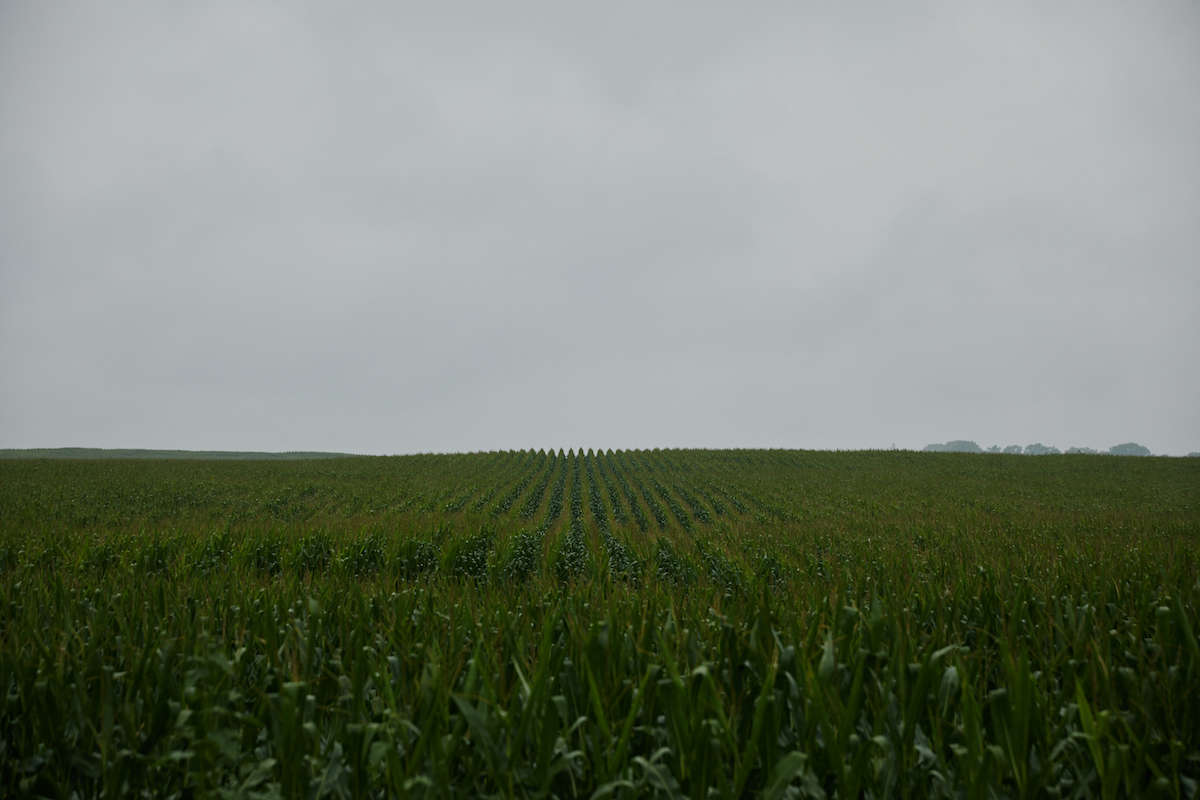
After the flame weeder demonstration, Sather leads me into one of the fields that constitute his 435 acres of corn. It’s deathly quiet, save for the steady drizzle, and straight lines of corn extend as far as the eye can see. Thoughts of Children of the Corn are inescapable.
The corn I’m seeing is about 104 days old—Sather plants his on May 15th, and typically harvests around November 15th. Sather pulls one of the immature ears from its stalk, removes the husk, and points it in my direction. “You can try it, there’s no chemicals on it.”
I’d eaten my breakfast very early that morning, and I’m starving as a consequence. I pick it up and take a bite without hesitation. It’s raw, just slightly sweet, and delicious.
Once harvested, Sather’s corn goes to a local farmer-owned co-op, which then sends it to US Distilled Products in Princeton, Minnesota, where it is distilled for Prairie Organic Spirits. An exception was last year’s harvest, which proved to be massive: Sather’s crop came out to 216 bushels per acre, 46 above the national average. Prairie Organic got their pick of the crop, and the corn they couldn’t take ended up as feed for organically raised chickens in Illinois.
“We raise vodka and eggs,” Sather says with a laugh.
This prompts my next question. I ask Sather if anything is done differently when raising corn destined to become liqour or chicken feed. He says that there is no difference in the growing process, but that the corn will be milled differently. The corn raised for Prairie Organic Spirits is crushed for fermentation, while corn used for feed is grinded into a digestible powder.
Once November hits, Sather and his two farmhands switch to a particularly intense harvest schedule. Work begins at 8am, after Sather has taken his children to school, and continues until midnight or even 2am.
“We rotate our sleep schedule so that we can accommodate our families a little bit,” says Sather, “otherwise we will never see them.”
Once all that corn has been dispatched to the still (or possibly the chicken coop), Sather and his crew get busy building flame weeders. But if he’s able to take a breather, Sather indulges his personal past time: restoring vintage Corvettes.
Before I leave the cornfield, Sather share a parable of sorts with me.
“Prices are a lot higher for organics in the grocery store. I go with this route: imagine if I had two bowls of organic cereal. If I poured a little bit of chemicals into one of them, would you then eat it if it cost two dollars less?”
It’s a good question, and can be applied beyond just cereal. In the case of spirits, substitute “grocery store” for “liquor store” and “cereal” for “Gin & Tonic.”



